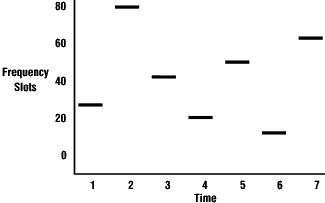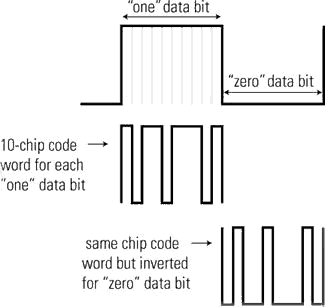| Benefits of Wireless LANs |
With wireless LANs, users can access shared information without looking for a place to plug in, and network managers can set up or change networks without installing or moving wires. Wireless LANs offer the following productivity, convenience, and cost advantages over traditional wired networks:
Technology Options
Manufacturers of wireless LANs have a range of technologies to choose from when designing a wireless LAN solution. Each technology comes with its own set of advantages and limitations.
Narrowband Technology
A narrowband radio system transmits and receives user information on a specific radio frequency. Narrowband radio keeps the radio signal frequency as narrow as possible just to pass the information. Undesirable crosstalk between communications channels is avoided by carefully co-ordinating different users on different channel frequencies. A private telephone line is much like a radio frequency. When each home in a neighbourhood has its own private telephone line, people in one home cannot listen to calls made to other homes. In a radio system, privacy and non-interference are accomplished by the use of separate radio frequencies. The radio receiver filters out all radio signals except the ones on its designated frequency.
Spread Spectrum
Most wireless LAN systems use spread-spectrum technology, a wideband radio frequency technique developed by the military for use in reliable, secure, mission-critical communications systems. Spread-spectrum is designed to trade off bandwidth efficiency for reliability, integrity, and security. In other words, more bandwidth is consumed than in the case of narrowband transmission, but the trade-off produces a signal that is, in effect, louder and thus easier to detect, provided that the receiver knows the parameters of the spread-spectrum signal being broadcast. If a receiver is not tuned to the right frequency, a spread-spectrum signal looks like background noise. There are two types of spread spectrum radio: frequency hopping and direct sequence.
Frequency-Hopping Spread Spectrum Technology
Frequency-hopping spread-spectrum (FHSS) uses a narrowband carrier that changes frequency in a pattern known to both transmitter and receiver. Properly synchronised, the net effect is to maintain a single logical channel. To an unintended receiver, FHSS appears to be short-duration impulse noise.

Frequency Hopping Spread Spectrum
Direct-Sequence Spread Spectrum Technology
Direct-sequence spread-spectrum (DSSS) generates a redundant bit pattern for each bit to be transmitted. This bit pattern is called a chip (or chipping code). The longer the chip, the greater the probability that the original data can be recovered (and, of course, the more bandwidth required). Even if one or more bits in the chip are damaged during transmission, statistical techniques embedded in the radio can recover the original data without the need for retransmission. To an unintended receiver, DSSS appears as low-power wideband noise and is rejected (ignored) by most narrowband receivers.

Infrared Technology
Infrared (IR) systems use very high frequencies, just below visible light in the electromagnetic spectrum, to carry data. Like light, IR cannot penetrate opaque objects; it is either directed (line-of-sight) or diffuse technology. Inexpensive directed systems provide very limited range (3 ft) and typically are used for PANs but occasionally are used in specific WLAN applications. High performance directed IR is impractical for mobile users and is therefore used only to implement fixed sub-networks. Diffuse (or reflective) IR WLAN systems do not require line-of-sight, but cells are limited to individual rooms.
| Send comments to webmaster Copyright © 1997 Derek Mc Donnell. All Rights Reserved. Last updated 07-Apr-1998. |
 |